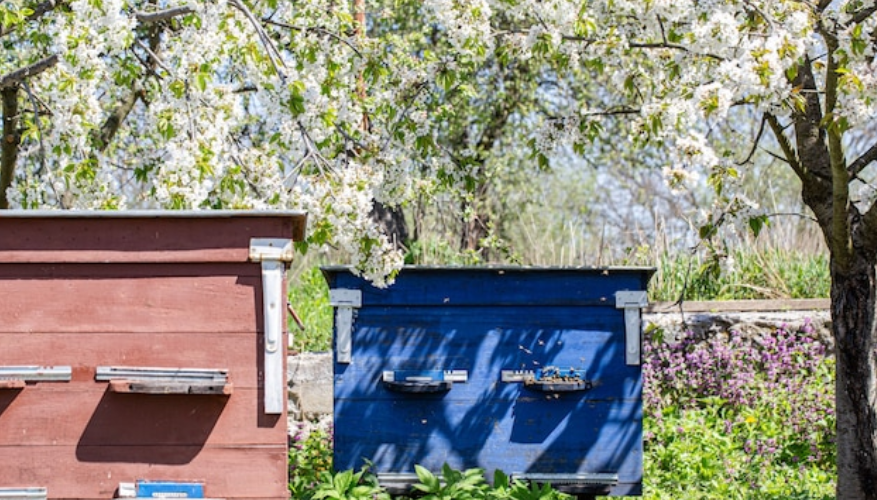The general public is responsive to the Apis mellifera crisis, however, honeybees aren’t the sole ones in trouble. alternative pollinators are in decline. Since turning into aware of the honeybee crisis, researchers have placed a lot of stress on finding out all pollinators. they need to learn that native bees not only fertilize crops aboard honeybees but also improve the potency of honeybee pollination. and a few native bee species are even more economical at pollinating than honeybees.

Nurturing a garden environment for native bees offers them an area during which to live, eat and lift their young. making a environment for bees is creating a life habitat for all, as a result of it attracts alternative wildlife, resembling butterflies, birds, hummingbirds and other insects. See however and why you ought to style your garden for native bees below.
Why should I care regarding pollinators?
Pollinators offer vital services to United States of America and therefore the ecosystem. Bees, birds and buggy fertilise over a 3rd of our crops. From our morning low and evening wine to our lunch period pear and sandwich mustard, the foods on our table owe their existence to pollinators. Most pollinators are insects. Butterflies, moths, beetles, European honeybees, native bees and even flies and wasps are all a part of the parade of insects that fertilise our native vegetables, our orchards of apples and alternative flowering plants round the globe.
What am i able to do for pollinators?
Pesticides, environment loss, habitat fragmentation and habitat degradation have had the biggest negative impact on pollinators. we will facilitate by merely providing a pesticide-free habitat. Any home gardener, with even the littlest garden, can create a difference. Besides, it’s nice fun.
Options of a Bee environment
1. Diversity with blocks of color. this massive block of orange Calif. poppies (Eschscholzia California) with another large block of deep blue ceanothus can attract native bees higher than a couple of every plant placed here and there.
The Xerces Society promotes planting a diversity of flowering plants for pollinators in large blocks of color. sort of a flashing atomic number 10 light, numerous plants in blocks purpose all the pollinators to the party. The Xerces Society says to provide: many totally different plant species flowering at constant time a mix of flowering annuals and perennials Flowers of different sizes, shapes and colours Blocks of color: patches of regarding 3½ feet by 3½ feet of one plant species and flower color year-around food: flowering plants all told growing seasons several of our home gardens can’t have that a lot of diversity, however, you’d be shocked what percentage pollinators you’ll support in a very little area. Do what you can with the space you have. This new garden has been designed thus these Clarkia and flower (Eschscholzia California) annuals are going to be replaced by flowering perennials as the year progresses. because the garden matures, a number of the annuals and perennials are going to be replaced by flowering trees and shrubs.

2. Native plants for native bees. The UC Berkeley Urban Bee science lab has been finding out native bees and their food decisions over the past decade. Through The Urban Calif. Native Bee Survey, the researchers discovered that native native bees like local native plants over nonnative ones four to one. This isn’t stunning after you have faith in the millennia that insects and plants are evolving together.
Native bees want each nectar (carbohydrates) and spore (protein) to feed themselves and their young. Some plants offer one or the other, whereas plants within the family Asteraceae, resembling Pacific aster (Symphyotrichum chilense), provide each spore and nectar.
In my opinion, the aster family is that the single most vital family of plants for insects, not just for the one-two punch of pollen and nectar however conjointly as a result of the central “disk” of every flower is really many flowers. Here you’ll see the numerous flowers on the central disk of a beach aster (Erigeron glaucus). This disk provides pollinators with a high concentration of food on one landing pad.
Along with plants within the aster family, several native species of buckwheat (Eriogonum spp), sage (like Cleveland sage, herbaceous plant clevelandii, shown), Calif. lilac (Ceanothus spp) ANd manzanita (Arctostaphylos spp) are prized by native bees in California.
The U.C. Berkeley Urban Bee science lab web site features a list of the most effective bee plants for California, as well as native and nonnative plant species, organized by spring and summer. Gordon Frankie of UC Berkeley printed an exciting new book this month, California Bees and Blooms: A Guide for Gardeners and Naturalists, that describes intimately the plants that California native bees notice most irresistible.
3. Water. All creatures want water. There are several choices for giving water to insects. one thing as straightforward as a basin offers enough water for birds and insects alike. Ponds and recirculating fountains will be a beautiful concentrate in a very garden style further as provide habitat. make certain to follow your native water company’s pointers for water usage. All water options need that you simply fill the water each few days or recirculate the water through a pump, to eliminate two-winged insects larvae.
Insects also prey on the minerals and salts in soil; alittle to moderate puddle of muddy water in a very giant bowl or trash barrel lid beneath the soil is a simple thanks to offer them further nutrients.
4. Full sun. Insects are cold-blooded so they need the heat of the sun to maneuver around. Like our morning coffee, a sunny garden offers insects the boost they have to get up and acquire going for the day.
not like European honeybees, which board teams within hives, most native bees live alone within the ground. Ground-nesting native bees dig holes in the ground or use vacated holes for his or her nests. alternative bee species use material and holes in wood. Ground-nesting bees don’t wish to battle through layers of mulch. make certain to go away to sunny areas with clean dirt in your garden for bees to create their homes in.



